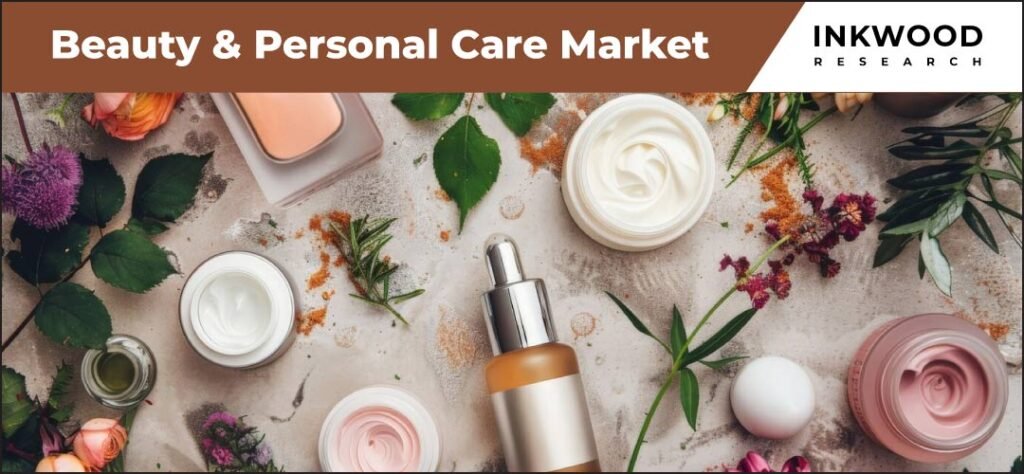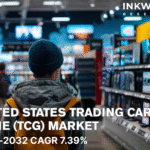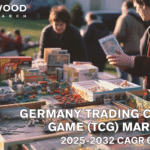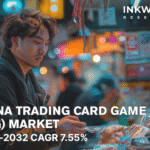GLOBAL BEAUTY & PERSONAL CARE INDUSTRY ANALYSIS
SCOPE OF THE REPORT
Global Beauty & Personal Care Market by Product Type (Baby and Child-specific Product, Bath and Shower, Color Cosmetics, Fragrance, Hair Care, Men’s Grooming, Oral Care, Skin Care, Sun Care, Other Product Types)
REPORTS » CONSUMER GOODS » PERSONAL CARE » GLOBAL BEAUTY & PERSONAL CARE INDUSTRY ANALYSIS
ABOUT THIS REPORT
The global beauty & personal care market is a fast-evolving industry driven by constant innovation and changing consumer preferences. With increasing demand for natural and organic products, as well as a focus on sustainable practices, the market has grown significantly in recent years.
While our complete report provides detailed & in-depth insights, this section aims to present an overview of the market’s critical components, including the analysis of current and emerging trends, regional market performance, and a review of the competitive landscape, offering a thorough understanding of the industry’s dynamics.
MARKET OVERVIEW
Consumer preferences in the beauty and personal care industry have shifted drastically, with a growing emphasis on sustainability, health-consciousness, and personalized formulations. Modern consumers, particularly millennials and Gen Z, are increasingly opting for products with clean ingredients, ethical sourcing, and environmentally friendly packaging.
There is also a noticeable rise in demand for multifunctional products, which offer convenience without compromising efficacy. These preferences are particularly evident in high-growth segments such as skincare and hair care.
Post-pandemic, consumers are returning to color cosmetics, but with a preference for natural-looking products that align with wellness trends. This shift has redefined product offerings, as companies increasingly focus on innovation to meet these evolving needs.

To Know More About This Report, Request a Free Sample Copy
MARKET POTENTIAL
One of the key trends shaping the beauty and personal care market is the increasing focus on inclusivity and diversity. Brands are expanding their product lines to cater to a wider range of skin tones, hair types, and cultural preferences. Additionally, the rise of gender-neutral and men’s grooming products signals an expansion in target demographics, widening the scope of the global beauty & personal care market.
Technology is another significant driver of market trends; digital tools such as AI-powered skincare diagnostics, virtual try-on experiences, and customized solutions are becoming more prevalent, allowing brands to offer highly personalized solutions. E-commerce has also become a dominant channel for beauty purchases, with online platforms providing a seamless shopping experience and enhanced customer engagement.
Looking forward, sustainability will continue to be a central focus, with more companies adopting green formulations, ethical sourcing, and sustainable packaging practices. Circular economy models, such as refillable packaging, are set to gain traction in the industry, driven by increasing environmental awareness among consumers.
Segmentation Analysis | Global Beauty & Personal Care Market
The beauty and personal care market is highly segmented, with diverse product categories catering to various consumer needs. While the full report offers a detailed breakdown and in-depth analysis of each product category, including market performance and growth projections, here’s a glimpse of the major segments considered:
- Baby and Child-Specific Products: This segment includes mild formulations designed for sensitive skin, with a growing demand for organic and hypoallergenic options.
- Bath and Shower: Driven by hygiene-conscious consumers, this segment remains essential, with innovations in aromatherapy and natural ingredients adding value.
- Color Cosmetics: After a temporary decline, this segment is rebounding with an emphasis on natural-looking makeup and products that promote skin health.
- Fragrance: Perfumes and colognes remain luxury items, with consumers seeking long-lasting scents that also offer mood-boosting benefits.
- Hair Care: This segment includes shampoos, conditioners, styling products, and treatments. Demand is high for products addressing specific hair concerns, such as scalp care and hair thinning.
- Men’s Grooming: A growing segment, men’s grooming is expanding beyond shaving products to include skincare, hair care, and beard care.
- Oral Care: This category is seeing innovations like eco-friendly toothbrushes, natural toothpaste, and advanced whitening solutions.
- Skin Care: Skincare is one of the fastest-growing segments, driven by increasing demand for anti-aging products, serums, and cleansers.
- Sun Care: With rising awareness of skin health, sun protection has become a staple in daily routines, promoting the growth of this segment.
Other Product Types: This includes niche categories such as deodorants, depilatories, and intimate care products, each catering to specific consumer needs.
GEOGRAPHIC ANALYSIS
- North America: North America remains a dominant market, with consumers driving demand for premium products, organic beauty, and technologically advanced formulations.
- Europe: Europe is a mature market with a high demand for luxury and natural beauty products. Regulatory emphasis on ingredient safety and eco-friendly practices drives innovation in sustainable beauty.
- Asia-Pacific: Asia-Pacific is the fastest-growing region, with countries like China, India, and South Korea at the forefront of beauty trends. The region’s focus on skincare, K-beauty innovations, and growing e-commerce channels are key factors driving growth.
- Rest of World: Market growth in Latin America is driven by rising disposable incomes and an increasing focus on personal grooming, particularly in Brazil and Mexico. Meanwhile, the Middle East & Africa presents opportunities due to its young population and growing demand for high-end products, especially in the luxury fragrance and skincare segments.
Market expansion opportunities lie in augmenting e-commerce infrastructure in emerging regions and targeting niche markets like halal beauty in the Middle East. In essence, companies that localize their offerings and cater to regional preferences are more likely to succeed.
Key Competitive Strategies for Market Leadership
In the fast-evolving beauty and personal care industry, companies employ a variety of strategies to maintain market leadership and differentiate themselves. These strategies often center around product innovation, sustainability initiatives, digital transformation, and strategic acquisitions.
By continuously adapting to consumer preferences and technological advancements, leading brands are able to capture market share and sustain long-term growth. Here’s how key players are leading the charge –
- L’Oréal SA: L’Oréal leads with its broad portfolio, spanning mass-market to luxury beauty products, with a focus on innovation and sustainability.
- Procter & Gamble: Known for its oral care and personal hygiene products, P&G continues to expand into skincare and grooming through acquisitions.
- Unilever PLC: Unilever’s focus on sustainability and personal care innovation places it as a key player in both mass-market and premium beauty segments.
- Estée Lauder: A leader in luxury skincare and cosmetics, Estée Lauder focuses on premium, high-performance products with a global reach.
- LVMH Moët Hennessy Louis Vuitton: Dominating the luxury fragrance and skincare space, LVMH’s beauty portfolio continues to grow through strategic acquisitions.
Essential Market Takeaways at a Glimpse
The beauty & personal care market is witnessing robust growth, driven by sustainability, personalization, and technological integration. The post-pandemic rebound in makeup sales, coupled with rising demand for skincare and men’s grooming products, presents significant growth opportunities. However, the competitive nature of the market requires constant innovation to meet changing consumer preferences. Companies that succeed in integrating sustainability and personalization into their product offerings are likely to secure a competitive advantage in this fast-growing business landscape.
TABLE OF CONTENTS
RESEARCH SCOPE & METHODOLOGY
- STUDY OBJECTIVES
- SCOPE OF STUDY
- METHODOLOGY
- ASSUMPTIONS & LIMITATIONS
EXECUTIVE SUMMARY
- MARKET DEFINITION
- MARKET SIZE & OVERVIEW
- KEY MARKET DRIVERS AND RESTRAINTS
MARKET DYNAMICS
- CONSUMER AND MARKET INSIGHTS
- CURRENT AND FUTURE MARKET TRENDS
- ESSENTIAL MARKET TAKEAWAYS
SEGMENTATION ANALYSIS
- MARKET SEGMENTATION BY PRODUCT TYPE
- BABY AND CHILD-SPECIFIC PRODUCT
- BATH AND SHOWER
- COLOR COSMETICS
- FRAGRANCE
- HAIR CARE
- MEN’S GROOMING
- ORAL CARE
- SKIN CARE
- SUN CARE
- OTHER PRODUCT TYPES
- MARKET SEGMENTATION BY PRODUCT TYPE
GEOGRAPHICAL ANALYSIS
- REGIONAL MARKET BREAKDOWN
- NORTH AMERICA
- EUROPE
- ASIA-PACIFIC
- LATIN AMERICA
- MIDDLE EAST AND AFRICA
- REGIONAL GROWTH TRENDS
- MARKET OPPORTUNITIES BY REGION
- REGIONAL MARKET BREAKDOWN
COMPETITIVE LANDSCAPE
- COMPETITIVE STRATEGIES
- MAJOR MARKET PLAYERS
- L’OREAL SA
- PROCTER & GAMBLE
- UNILEVER PLC
- ESTEE LAUDER
- LVMH MOËT HENNESSY LOUIS VUITTON
FAQs
The beauty industry is seeing significant growth in clean beauty, sustainability, and personalization. Consumers are demanding eco-friendly packaging, cruelty-free products, and skincare solutions tailored to their unique skin needs, driving brands to innovate with natural ingredients and ethical practices.
Tech innovations like AI-driven skin analysis, augmented reality (AR) for virtual try-ons, and personalized product recommendations are transforming customer experiences. Brands are also leveraging e-commerce and social media platforms to reach a broader, tech-savvy audience.
Key drivers include the rising demand for men’s grooming products, increased focus on self-care, and a surge in beauty influencers and social media marketing. The global expansion of premium and affordable beauty brands, particularly in emerging markets, is also fueling growth.
RELATED REPORTS
-

UNITED STATES TRADING CARD GAME (TCG) MARKET FORECAST 2025-2032
-

GERMANY TRADING CARD GAME (TCG) MARKET FORECAST 2025-2032
-

CHINA TRADING CARD GAME (TCG) MARKET FORECAST 2025-2032
-

ASIA-PACIFIC TRADING CARD GAME (TCG) MARKET FORECAST 2025-2032
-

EUROPE TRADING CARD GAME (TCG) MARKET FORECAST 2025-2032
-

NORTH AMERICA TRADING CARD GAME (TCG) MARKET FORECAST 2025-2032
-

GLOBAL TRADING CARD GAME (TCG) MARKET FORECAST 2025-2032
-

VIETNAM BABY DIAPER MARKET FORECAST 2025-2032
-

UNITED STATES BABY DIAPER MARKET FORECAST 2025-2032
-

THAILAND BABY DIAPER MARKET FORECAST 2025-2032
